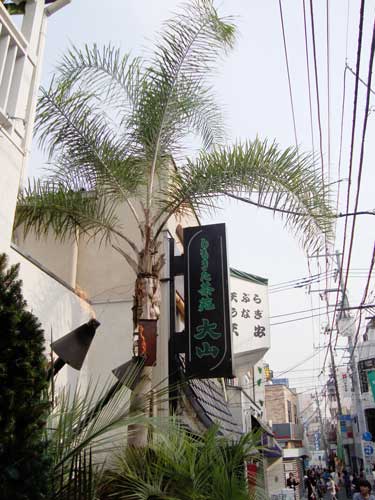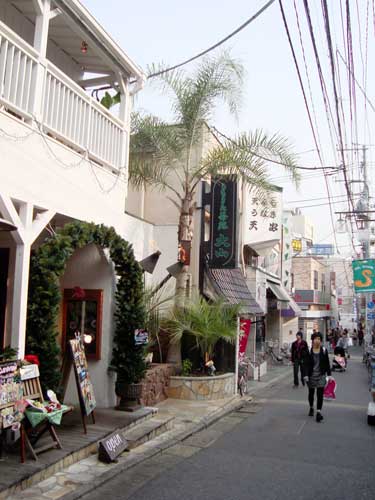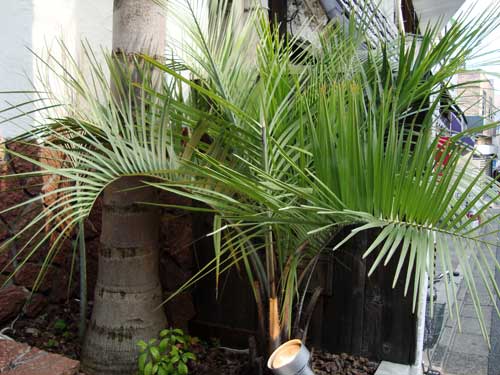
The palm on the left side comes from high altitude Hawaii, and is uniquely suited to San Francisco’s cool ocean-side climate.

東京に引っ越しする前に、サンフラシスコで耐寒性のあるヤシを育てていました。サンフランシスコは一年中寒いので、育つヤシと育たないヤシがあります。最近、昔の庭を訪れたとき、木が大きくなっていたので、うれしかったです。
Before I moved to Tokyo four years ago, I grew cold weather palm trees in San Francisco. On a recent visit, it was great to see the trees getting larger. Above is a pritchardia minor from high altitude Hawaii. Below is the far more common queen palm, a native of South America that has been deemed invasive in Florida and Queensland.


On the north side of Shimokitazawa, there is a Hawaiian restaurant with palm trees that are unusual for Tokyo. The tall palm tree with a silver trunk is a Queen Palm, syagrus romanzoffiana, native to woodland Brazil and Argentina and very common in San Francisco and other cold climates. It looks somewhat like a coconut palm.
The restaurant is clearly using these gorgeous palms– along with tiki torches and up-lights lit even during the day, a water fountain, and a wood porch extending to the street– as signifiers of exotic and distant islands. The effect is rather surprising and a pleasant contrast from the neighborhood’s narrow and crowded streets with few real street trees.

The trees look very healthy. I wonder if the restaurant provides special protection in the winter. The small palm tree is also very appealing. It is a Pindo Palm, or butia capitata, native to Brazil and Uruguay. Since it is hardy to 9C (15F), it seems well suited to Tokyo.
